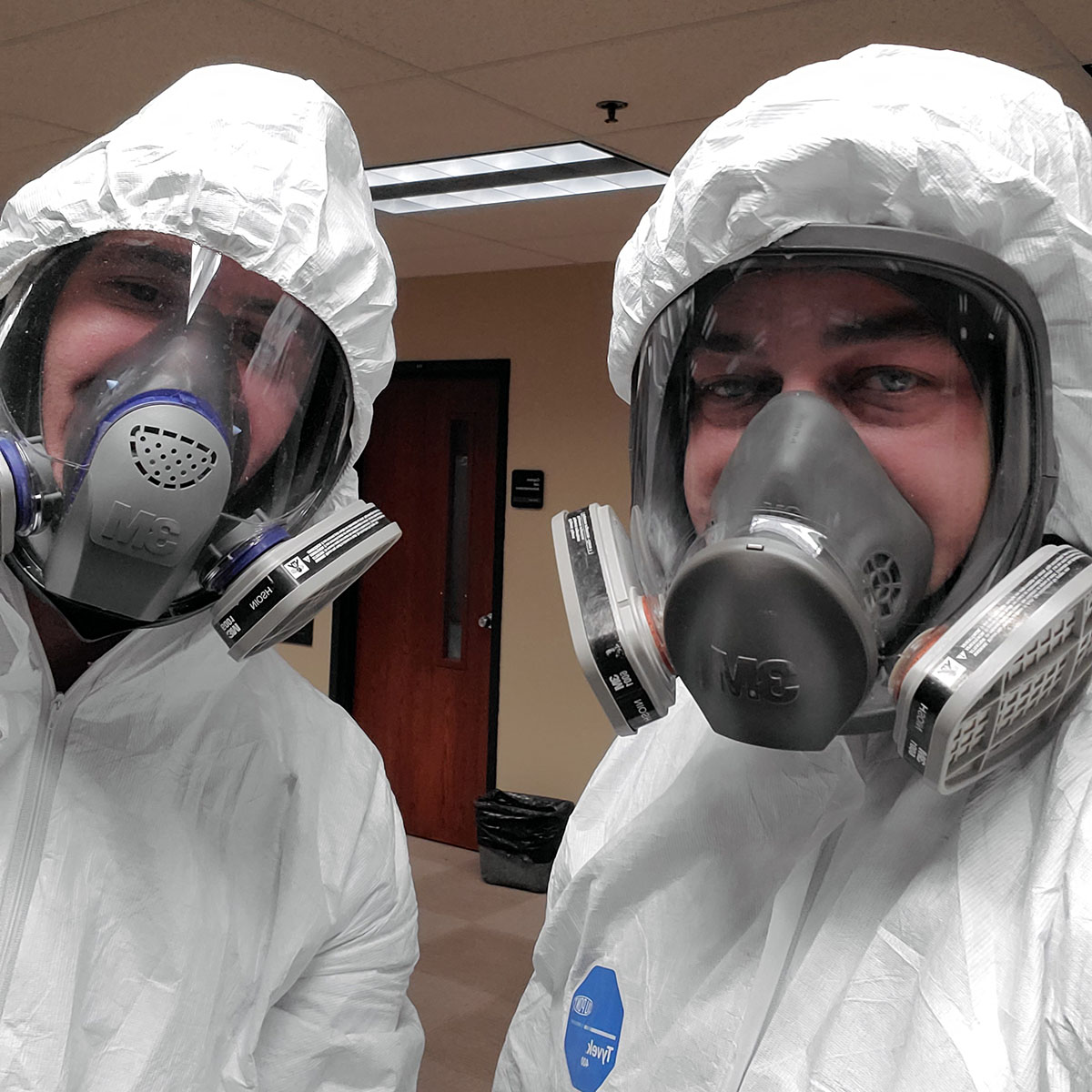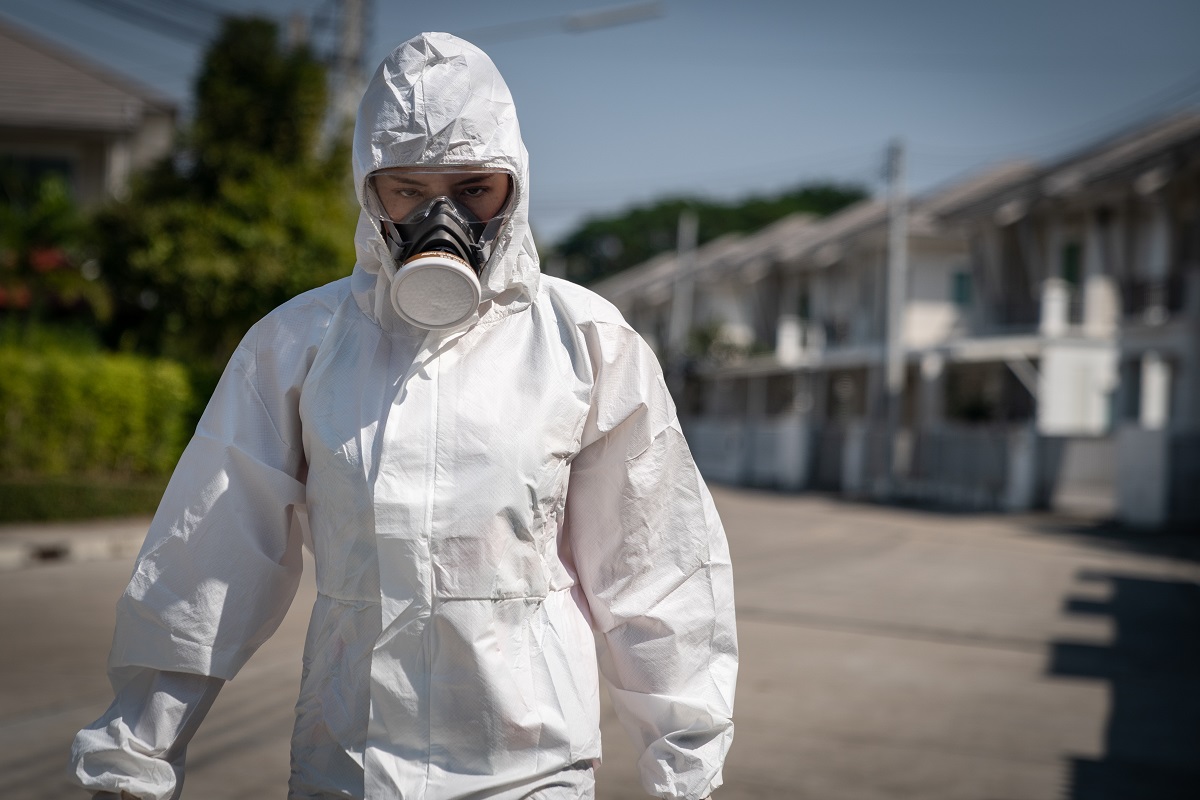Mold Remediation Solutions: Securing Your Building from Mold And Mildew Damage
Specialist Biohazard Cleansing and Purification for Blood, Bodily Fluids, and Hazardous Materials
The potential health and wellness risks connected with exposure to biohazards emphasize the vital demand for meticulous handling and complete cleaning. As we navigate the complex landscape of biohazard cleaning, understanding the nuances of regulations, compliance, and the customized tools at play becomes crucial in ensuring a detailed and safe decontamination process.
Health Risks of Biohazard Exposure
Direct exposure to biohazards positions considerable health and wellness threats that can cause serious effects for communities and individuals alike. Biohazards encompass a vast array of biological compounds, including blood, physical liquids, mold and mildew, microorganisms, infections, and various other possibly contagious products. When individuals enter call with these biohazards, whether with mishaps, improper handling, or ecological direct exposure, they deal with the danger of contracting serious diseases or illness.
One of the primary health risks linked with biohazard direct exposure is the transmission of contagious illness. Bloodborne pathogens such as HIV, hepatitis B and C, and various bacteria can be existing in biohazardous materials, presenting a straight danger to human health and wellness. Inhaling air-borne biohazards like mold and mildew spores or coming into contact with polluted surfaces can additionally result in respiratory system concerns, allergies, and other negative health and wellness results.
Furthermore, biohazard direct exposure can have long-term health and wellness ramifications, with some diseases showing up years after the initial get in touch with (Blood Cleanup). As a result, it is important to prioritize proper biohazard cleaning and decontamination to minimize these wellness dangers and guarantee the security of communities and individuals

Specialized Educating for Biohazard Cleanup
When it concerns taking care of biohazard clean-up efficiently and safely, specialized training plays a basic role in making certain proper decontamination treatments are followed. Biohazard cleaning calls for details understanding and skills to effectively reduce dangers connected with bloodborne microorganisms, bodily liquids, and unsafe materials. Specialists trained in biohazard clean-up undergo rigorous instruction on just how to safely take care of, get rid of, and take care of biohazardous materials to stop contamination and direct exposure.
Specialized training for biohazard clean-up covers a variety of essential topics, including correct personal safety devices (PPE) use, bloodborne virus recognition, purification techniques, and contaminated materials disposal procedures. People educated in biohazard clean-up are equipped with the required proficiency to examine contamination levels, recognize prospective dangers, and implement ideal cleaning treatments in compliance with regulative requirements.
Constant training and education and learning are extremely important in the area of biohazard cleaning to remain upgraded on the most up to date purification innovations, safety procedures, and policies. By purchasing specialized training, biohazard clean-up specialists can properly reply to emergency cleaning circumstances and protect both public wellness and the environment.
Value of Proper Purification Strategies
Using correct decontamination techniques is important in biohazard cleanup to effectively minimize and eliminate unsafe products health and wellness dangers. Efficient decontamination not only makes certain the elimination of noticeable traces of blood, physical liquids, and other biohazards yet likewise targets undetectable pathogens that may pose major health and wellness hazards if not properly removed. By adhering to stringent purification methods, trained experts can considerably decrease the threat of direct exposure to harmful microorganisms, viruses, and bacteria that can lead to infections or illness.
Proper decontamination techniques include using specific equipment and disinfectants that are especially created to counteract biohazards effectively. Detailed cleaning and sanitation of polluted areas are vital to avoid the spread of virus and guarantee a risk-free atmosphere for occupants. Furthermore, the right disposal of biohazardous waste complying with purification procedures is vital in avoiding contamination of various other surface areas or individuals.

Tools and Tools for Safe Cleanup
When dealing with blood, bodily fluids, or hazardous products, biohazard cleansing experts rely on specialized equipment to reduce direct exposure threats and completely sanitize the affected area. Additionally, biohazard cleaning sets containing disinfectants, absorptive products, and biohazard bags are made use of to safely get rid of and contain of polluted things.
Advanced cleansing tools like hospital-grade anti-bacterials, HEPA-filtered vacuum cleaners, and fogging machines are used to disinfect surface areas and get rid of biohazards successfully. Specialized equipment such as sharps containers and biohazard waste disposal containers are used to safely handle sharp objects and biohazardous waste materials. By utilizing the ideal tools and tools, biohazard cleaning specialists can make certain a thorough cleaning process that prioritizes safety and security and lessens health and wellness risks for both workers and occupants of the afflicted area.
Laws and Conformity in Biohazard Cleansing
Proper adherence to policies and compliance standards is critical in biohazard cleaning to make certain the safety of both personnel and the setting. Federal government firms such as OSHA (Occupational Safety And Security and Wellness Management) and the EPA (Environmental Defense Firm) have actually established specific guidelines for biohazard cleanup treatments to decrease wellness dangers and environmental contamination. These policies cover a series of aspects consisting of the handling, transport, and disposal of biohazardous materials, as well as the essential training and safety devices required for workers associated with the clean-up process.
Biohazard cleansing firms need to stay current with these guidelines to assure that their procedures satisfy the required safety criteria. Failure to comply with these laws can lead to severe effects, including penalties, lawful action, and jeopardizing the health and wellness of individuals and the setting. By complying with stringent guidelines and compliance actions, biohazard cleaning firms can properly reduce threats and make sure a detailed and how much does biohazard cleanup pay risk-free cleaning process for all events entailed.
Conclusion
To conclude, biohazard cleansing and decontamination need specific training, proper methods, and adherence to regulations. Direct exposure to blood, bodily liquids, and unsafe materials postures significant health threats, making it important to make use of the right devices and devices for safe clean-up. By complying with rigorous protocols and guidelines, experts can properly reduce the dangers connected with biohazard exposure and make sure the safety and security of both themselves and others.
As we browse the intricate landscape of biohazard clean-up, comprehending the subtleties of laws, compliance, and the specialized equipment at play ends up being imperative in guaranteeing a comprehensive and risk-free purification procedure. (Blood Cleanup)
When it comes to managing biohazard cleaning successfully and securely, specialized training plays a basic duty in making certain correct purification treatments are adhered to.Making use of correct purification strategies is critical in biohazard cleaning to properly lessen and he said get rid of dangerous materials health threats. In addition, biohazard cleansing sets including disinfectants, absorbent products, and biohazard bags are made use of to safely get rid of and consist of of polluted items.
Federal government companies such as her explanation OSHA (Occupational Security and Health Management) and the EPA (Environmental Security Company) have developed particular guidelines for biohazard cleaning procedures to minimize wellness dangers and environmental contamination.